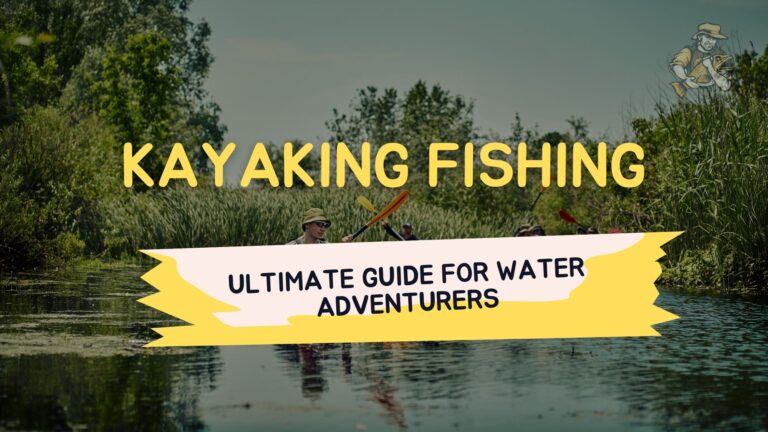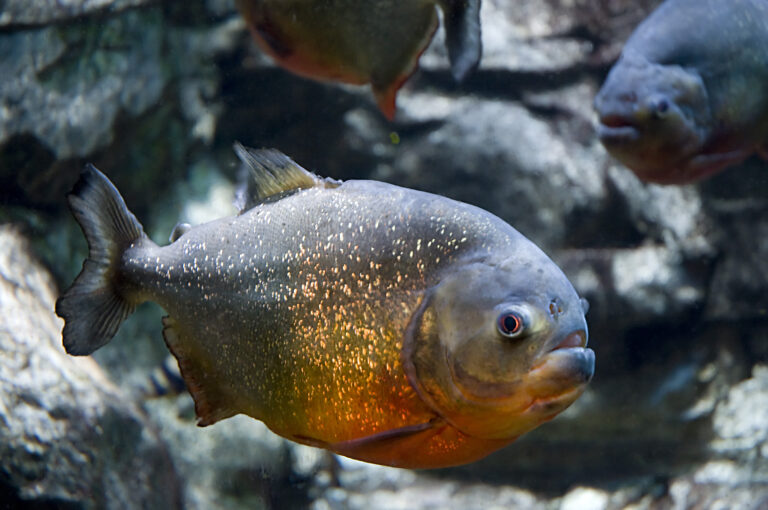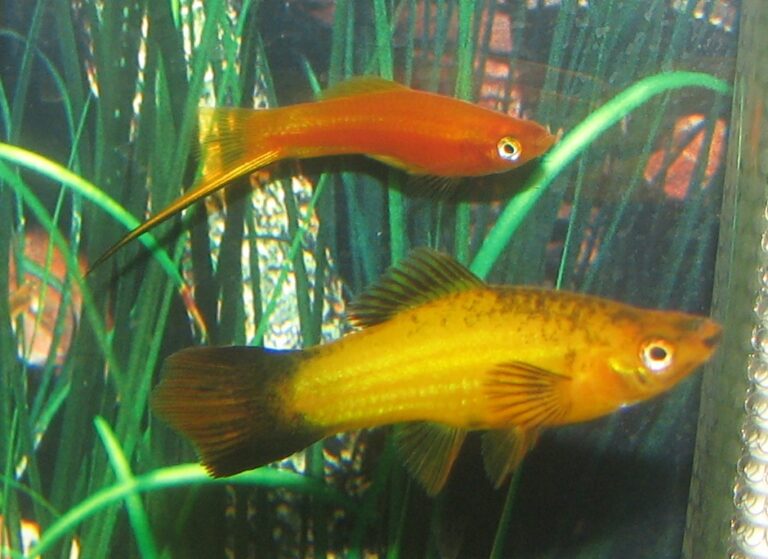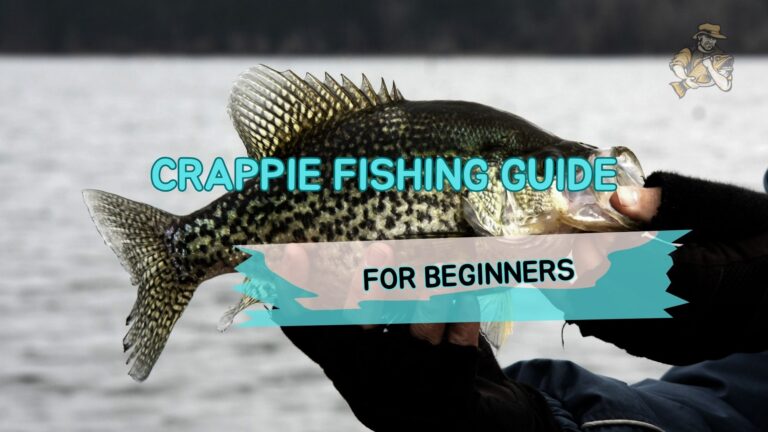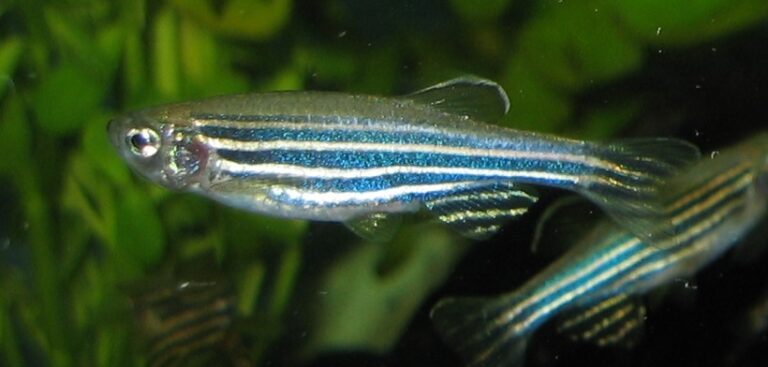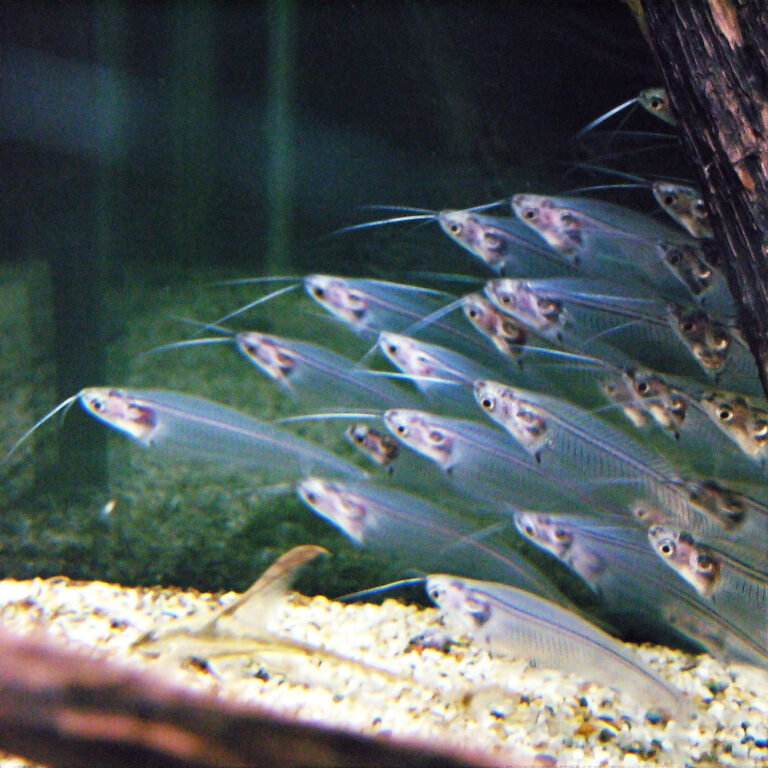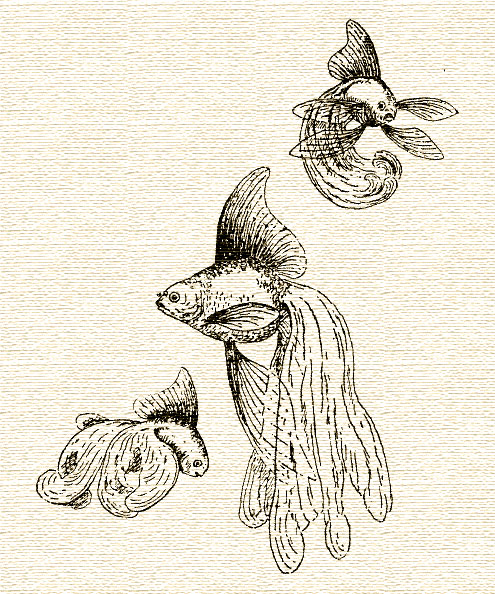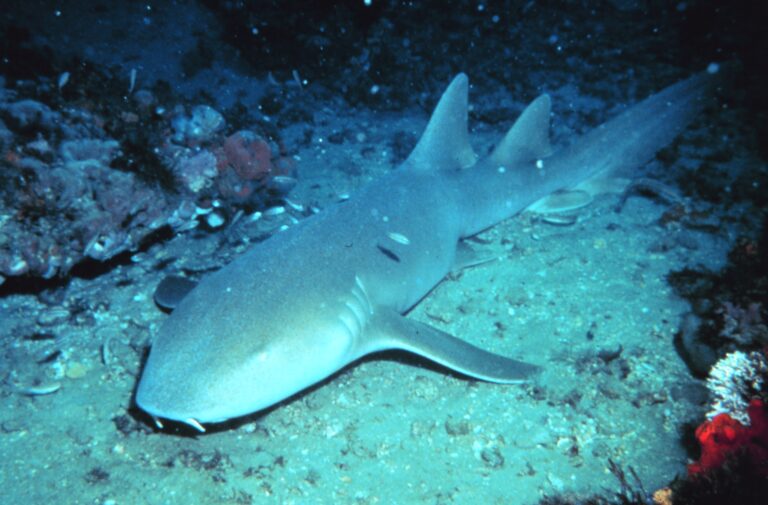Bora Bora Fishing: What I Learned After 3 Failed Trips
By Adam Hawthorne | Last Modified: May 6, 2025
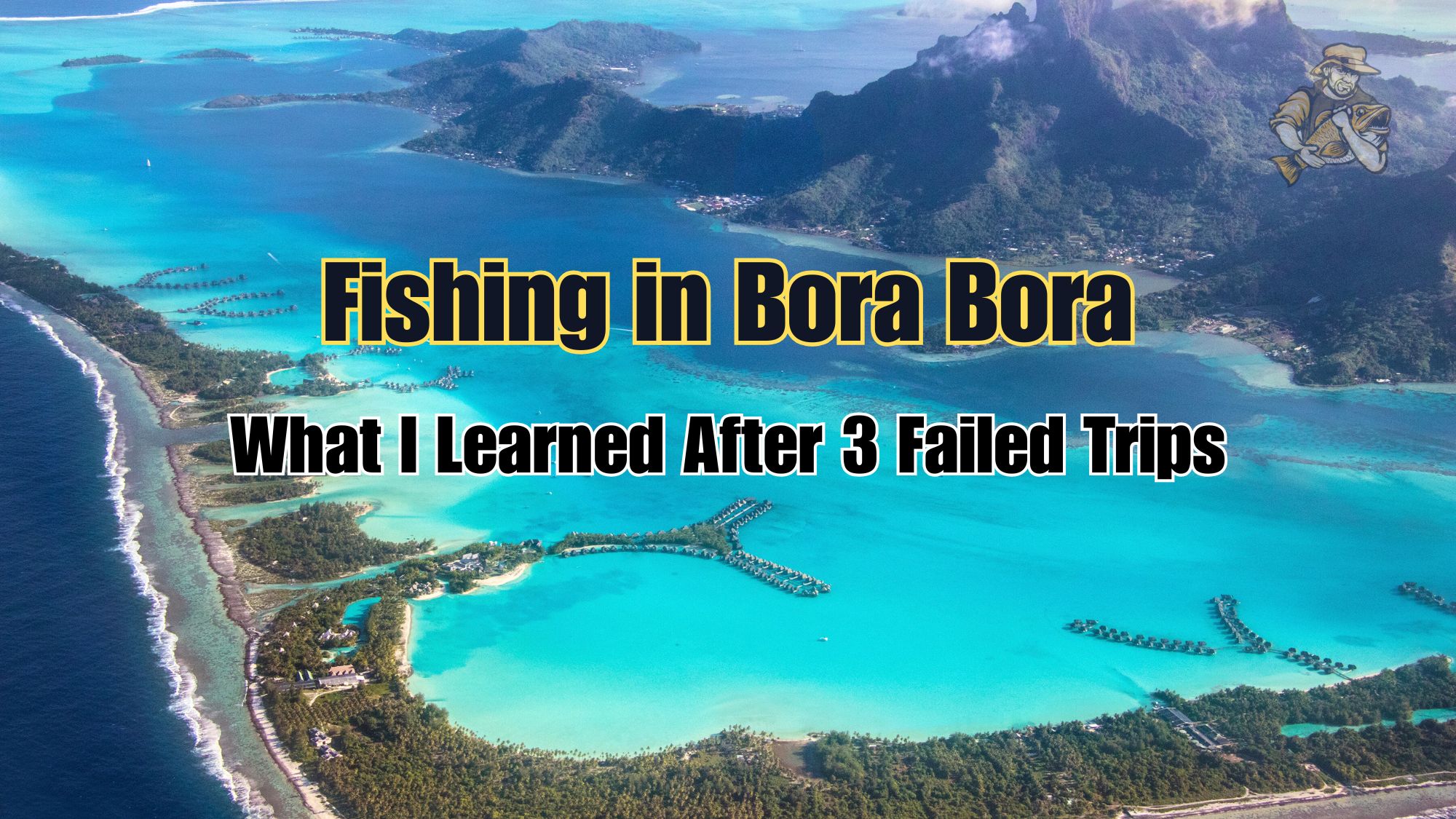
I still remember staring at those impossibly blue waters on my first morning in Bora Bora, thinking I was about to experience the greatest fishing of my life. The brochures promised endless opportunities – giant trevally, mahi-mahi, marlin, tuna – all practically leaping into your boat.
Three trips and thousands of dollars later, I’ve finally figured out what actually works in Bora Bora. And it’s nothing like what those glossy resort pamphlets tell you.
My first trip in 2019 was a complete disaster – wrong season, wrong guide, wrong expectations. My second trip (February 2022) was marginally better but still disappointing. It wasn’t until my third visit last September that everything finally clicked. I caught more fish in two days than my previous trips combined – not because I got lucky, but because I finally understood how fishing in Bora Bora actually works.
If you’re planning a Bora Bora fishing adventure (or bringing a spouse who’s tolerant enough to let you sneak away from the overwater bungalow for a day), here’s what I wish someone had told me before I blew nearly $3,000 on fishing mistakes.
The Reality of Fishing in Bora Bora (Not What You Expect)
First things first – Bora Bora isn’t Michigan. Sounds obvious, but you’d be surprised how many habits from home waters don’t translate to tropical lagoons. I spent the first half-day of my first trip casting at every ripple and shadow like I would on Lake St. Clair, completely ignoring my guide Manu’s increasingly frustrated suggestions.
The crystal-clear water plays tricks on you. You can see down 50+ feet in some spots, making fish appear much closer to the surface than they actually are. I spent hours casting to yellowfin tuna that were actually well out of range of my gear.
What nobody tells you is that Bora Bora fishing falls into three completely different categories, each requiring different approaches:
- Lagoon fishing (inside the reef)
- Reef fishing (at the reef edge)
- Deep sea fishing (beyond the reef)
Most tourists book whatever random charter shows up at their resort, ending up with a one-size-fits-all experience that doesn’t excel at any of these. That was my first mistake.
During my second trip, I met an American expat named Craig at the Bloody Mary’s restaurant bar who’d lived in French Polynesia for 11 years. After laughing at my fishing woes, he explained the fundamental issue: “Everyone tries to fish Bora Bora like it’s a Caribbean island. It’s not. The volcanic topology creates completely different fish behavior here.”
That conversation completely changed my approach, as did the comprehensive Bora Bora fishing calendar Craig showed me on his phone. Which brings me to the next critical point…
Seasons Matter More Than You Think
Bora Bora’s fishing seasons are far more pronounced than I expected. My first trip was in July – which I’ve since learned is possibly the worst month to target the species I wanted.
The yellowfin tuna run typically peaks between March and May. The mahi-mahi (dorado) fishing is best from October through December. Marlin are most consistent from December through February, though you can find them year-round.
But here’s where it gets complicated – these patterns have shifted in recent years. According to Tehetu, my guide on the third trip, climate changes have pushed some runs about 3-4 weeks later than historical patterns. The local fishing cooperative data backs this up, showing catch rates shifting later in the calendar compared to 10 years ago.
My September trip hit the early mahi-mahi run perfectly. We landed 7 mahi in a single morning – all healthy fish between 15-30 pounds. Two years earlier, same week in September, same boat: zero mahi.
Local Guides vs. Resort Charters: A World of Difference
Maybe my biggest revelation was the dramatic difference between booking through your resort and finding a local guide. The price difference was minimal, but the experience gap was enormous.
My first two trips were resort bookings – comfortable boats with matching polo shirts and coolers full of Hinano beer. Very professional. Very expensive. Very mediocre fishing.
On trip three, I connected with Tehetu through a local fishing forum. His boat was smaller, older, and not nearly as photogenic for Instagram. But this guy knew exactly where the fish were holding, which techniques were working that week, and had a network of local fishermen constantly sharing information.
The resort guides rarely ventured beyond sight of Mount Otemanu. Tehetu took us to the neighboring island of Taha’a one day when he heard the bite was hot there – something the resort would never allow due to their rigid schedules.
When I asked one resort guide about trying a particular spot, he literally said, “We don’t go there because it’s harder to get good tourist photos of the mountain.” At least he was honest, I guess.
Lagoon Fishing: The Most Underrated Option
Most tourists fixate on deep sea fishing – going after marlin and tuna beyond the reef. Nothing wrong with that, but they completely miss what might be the most fun fishing opportunity: the lagoon itself.
Inside Bora Bora’s calm lagoon waters, you’ll find:
- Bluefin trevally
- Giant trevally (GTs)
- Snapper (multiple species)
- Triggerfish
- Bonefish (on certain flats)
- Barracuda (especially near channel edges)
During my second trip, I stumbled into an unbelievable GT bite while fishing with just a simple spinning rod near our bungalow. These weren’t the 60+ pound monsters you might find on the reef edge, but 10-15 pound fish that fought like absolute demons on light tackle.
The hotel staff acted surprised, mentioning something about unusual baitfish movements that week. Later I learned from Tehetu that this happens relatively regularly when tidal conditions are right – the resort staff just don’t pay attention to these patterns.
Lagoon Tactics That Actually Work
Forget everything you know about subtle presentations. In the lagoon, I’ve had the most success with:
- High-speed retrieves – Bluefin trevally in particular will ignore a slow-moving lure but crash something moving quickly
- Surface commotion – Noisy topwater lures, especially at dawn, drive GTs absolutely crazy
- Flash over subtlety – The clear water means fish can spot your lure from far away – use this to your advantage with flashy, reflective lures
During my third trip, I spent one afternoon sight-casting to triggerfish on a shallow flat with a small crab fly. I was joined by a French fisherman named Pascal who was using a simple spinning setup with a 1/4 oz pink bucktail jig. We were targeting the same fish, but his hookup rate was at least 3x better than mine because of the flash his lure produced.
The lagoon also offers incredible fishing opportunity directly from shore or your overwater bungalow. My wife Lisa still talks about the morning she hooked what was probably a 20+ pound GT while casually dropping a sardine off our bungalow deck. Unfortunately, she was using the ultralight travel rod I’d brought for panfish, and the fish spooled her in seconds.
Reef Fishing: Where Worlds Collide
The reef edge is where I’ve found the most consistent action. It’s the transition zone between the calm lagoon and the open ocean – a superhighway for predatory fish.
The reef drop-offs in Bora Bora are dramatic – in some spots, the depth goes from 15 feet to 1,000+ feet in the span of 50 yards. This creates perfect ambush points for predators.
On my second trip, we fished the western reef edge for an afternoon and landed several nice yellowfin tuna by slow-trolling live bonito. The technique was effective but hardly exciting.
For my third trip, Tehetu introduced me to “speed jigging” the reef edge – arguably the most physically demanding fishing I’ve ever done. Using specialized heavy jigs (250-400g), you drop to the bottom of the reef wall and employ a manic retrieve with aggressive jerks. It’s absolutely exhausting… and absolutely effective.
In a two-hour session, I hooked nine fish using this technique – including two yellowfin tuna, a monster rainbow runner, and several species I’d never even heard of before. My arms were useless noodles afterward, but it was worth it.
The western reef edge generally fishes better in the morning, while the eastern edge often produces better in the afternoon. This isn’t just anecdotal – it’s tied to current patterns and baitfish movements. Tehetu was religious about checking tide charts and current reports before deciding where to fish each day.
Equipment Revelations
I’ve always been a tackle junkie, but Bora Bora humbled me. Some of my expensive specialty gear sat unused, while simple setups produced fish after fish.
For reef fishing, I found success with:
- Medium-heavy spinning gear with 30-40lb braid
- Fluorocarbon leaders (40-60lb) – the clear water makes this non-negotiable
- Jigs in the 150-400g range
- Simple assist hooks rather than treble hooks
My go-to rod for the reef was a 7’6″ medium-heavy spinning rod that packs down for travel. Nothing fancy – I paid maybe $150 for it five years ago. But it had the right action for working jigs and enough backbone to handle surprisingly large fish.
The guides used much heavier conventional setups, but I found them uncomfortable and less versatile. When I showed up with my spinning gear, Tehetu initially looked concerned but quickly changed his tune after seeing it in action.
One equipment lesson I learned the hard way: bring more jigs than you think you’ll need. I lost 6 expensive jigs to the reef on my second trip. Those razor-sharp coral formations will slice through even heavy fluorocarbon if you’re not careful with your retrieves.
Deep Sea Fishing: Managing Expectations
Let me be brutally honest here – deep sea fishing from Bora Bora can be spectacular, but it’s also the most hit-or-miss experience.
The open water begins immediately outside the reef – there’s no gradual continental shelf like in many other destinations. This means you’re in deep blue water right away, which is both good and bad.
Good: You don’t need to run far to reach productive water. Bad: The biomass is more scattered without the structure created by a shelf.
My first trip included a full-day deep sea charter that produced exactly zero strikes in 8 hours. Not even a short-strike or follow. Nothing. At $1,200 for the day, that’s an expensive boat ride.
On my third trip, we booked a half-day deep sea excursion with more realistic expectations. We were fortunate to raise two marlin (landing one approximately 150-pound specimen) and caught three yellowfin tuna. Considering the shorter duration, it was a spectacular success.
The difference? Knowledge and timing.
Tehetu focused on specific areas where underwater seamounts create upwellings – these concentrate baitfish and, consequently, the predators that feed on them. These aren’t marked on any tourist maps and aren’t obvious without specialized knowledge.
He also insisted we start at first light – we were on the water at 5:30 am, while most resort charters don’t leave until 8:00 or 9:00. By the time those boats arrived, we’d already caught two tuna and had our marlin.
The Live Bait Difference
On all three trips, the boats used a combination of lures and live bait. The difference in effectiveness was staggering.
Artificial lures caught fish, certainly. But live bait outperformed by at least 5-to-1. And not just any live bait – specific species made a huge difference.
Small yellowfin tuna and rainbow runners were the magic baits for marlin. Tiny baitfish called “ature” (a type of scad) were irresistible to larger tuna.
The resort operations generally carried whatever bait was easiest to obtain that morning. Tehetu spent the previous evening catching specific baits because he knew exactly what would work best for our target species.
This meticulous approach extended to how the baits were rigged. Tehetu used a bridle rig that kept the bait swimming naturally. The resort guides mostly used single-hook setups through the bait’s nose or back, which limited its movement and lifespan.
Economic Reality Check: The True Cost of Bora Bora Fishing
Bora Bora is expensive. This isn’t news to anyone who’s researched a trip there. But the fishing costs can sneak up on you if you’re not prepared.
Here’s the breakdown from my experiences:
Resort-booked half-day charter: $600-800 Resort-booked full-day charter: $1,100-1,500 Local guide half-day (4-5 hours): $450-650 Local guide full-day: $800-1,100
These prices generally include basic equipment, but specialty tackle might cost extra. Most charters include some drinks and light snacks.
The catch? Many operations have a strict catch-and-release policy, or they keep the fish you catch. If you’re staying somewhere with kitchen facilities and want to cook your catch, clarify this when booking.
Hidden Costs and Considerations
Beyond the charter fee, consider these potential additional expenses:
- Tips (10-20% is standard)
- Transportation to/from the marina if not included
- Specialty tackle if you want to use specific lures or techniques
- Fish processing if you want to keep your catch
- Photo packages (some charters sell professional photos)
On my second trip, I was surprised by a $75 fee for cleaning and packaging the one mahi-mahi I wanted to keep. Had I known beforehand, I might have made different arrangements.
Local Knowledge That Made All the Difference
What finally turned my Bora Bora fishing experience around wasn’t fancy gear or expensive boats – it was tapping into local knowledge.
During my third trip, I spent an evening at a local gathering spot called Bloody Mary’s. I struck up a conversation with several local fishermen, including a guy named Marama who had lived on the island his entire life.
The insights were invaluable:
- Moon phases matter tremendously – The three days before and after the full moon produce the best reef fishing. The new moon period is better for lagoon species. My failed trips? Both during quarter moons.
- The prevailing wisdom about morning/evening being best isn’t always true here – During certain seasons, midday fishing during the strongest sun produces better because it creates sharper shadows that predators use to hunt.
- The north side of the island fishes completely differently than the south – This seems obvious in retrospect, but I hadn’t considered how the mountain created different wind patterns and water conditions on different sides of the island.
- Certain weather conditions telegraph what will happen – A sudden drop in barometric pressure often triggers a feeding frenzy among tuna, while steady high pressure makes the lagoon fishing more productive.
Marama and his friends laughed at some of the advice I’d been given by resort staff. One particularly amusing myth: “Never fish during rain because the fish go deeper.” As Marama explained, certain types of rain actually wash insects and small organisms into the water, creating prime feeding opportunities.
I’ve experienced this same phenomenon on Michigan lakes, but somehow thought tropical fish would behave differently. They don’t – predators are predators everywhere.
Finding the Right Charter (What I Wish I’d Known Sooner)
If you’re planning a Bora Bora fishing trip, here’s my hard-earned advice for finding the right charter:
- Book directly with local operators – Resort concierges typically add a 30-50% markup to local guide prices while offering less specialized experiences.
- Look for specialization – Some charters focus on specific types of fishing. Don’t book a deep-sea operation if you’re primarily interested in sight-casting on the flats.
- Check reviews carefully – Look specifically for reviews from serious anglers, not just tourists who enjoyed a boat ride.
- Ask about their approach to different conditions – If they give vague answers about “going where the fish are,” keep looking. Good guides should be able to explain exactly how they adapt to different weather, tides, and seasons.
- Clarify what happens with your catch – Some operations have strict catch-and-release policies; others keep everything for commercial sale. Know this before booking.
I found excellent Bora Bora fishing guides through this local directory that my friend Craig recommended. The difference in knowledge and approach compared to resort-recommended options was stunning.
Several guides now have Instagram accounts where they regularly post recent catches. This is a great way to see what’s actually being caught, not just what the marketing materials promise.
Best Spots That No One Talks About
While I can’t give away all of Tehetu’s secret spots (he’d probably hunt me down), I can share a few productive areas that aren’t on most tourists’ radar:
1. The Airport Flat
The shallow area near the airport has incredible bonefish opportunities during low tide. Most tourists never fish here because it’s not as scenic as other parts of the island, but the fishing can be spectacular.
2. The Eastern Reef Cut
There’s a small cut in the eastern reef that creates a natural funnel for baitfish moving between the lagoon and open ocean. During incoming tides, this spot consistently produces GTs and bluefin trevally.
3. The “Secret” Seamount
About 5 miles south of the main island lies an unmarked seamount that rises from 2,000 feet to about 150 feet below the surface. This structure consistently holds yellowfin tuna and occasional marlin. Few charters make the run because it’s slightly farther than the usual spots.
4. The Northern Coral Gardens
These scattered coral formations in the lagoon look unassuming but hold surprising numbers of snapper and smaller trevally. Using light tackle here provides non-stop action when the deep sea fishing is slow.
5. The Southern Resort Flats
The shallow areas near the major southern resorts have excellent triggerfish and bonefish opportunities at first light, before swimmers and watercraft traffic scatter them.
During my last morning in Bora Bora, I waded the flat right in front of our resort at 5:30 am. In two hours, I landed 6 bonefish and had shots at several huge triggerfish – all within sight of our bungalow. By 8:00 am, the flat was crowded with paddleboarders, and the fishing opportunity was gone.
Surprising Species You Might Encounter
The marketing materials for Bora Bora fishing typically highlight the “glamour species” – marlin, tuna, mahi-mahi. But some of my most memorable catches were species I’d never expected:
Napoleon Wrasse
These massive, bulbous-headed fish can exceed 100 pounds. They’re typically found around reef structures and hit jigs and live baits intended for other species. The colors are absolutely electric – blues, greens, and purples that have to be seen to be believed.
Coral Trout
Not actually trout at all, these beautiful reef-dwellers are part of the grouper family. They strike aggressively and pull hard for their size. The meat is considered some of the finest in the Pacific.
Bluespine Unicornfish
With their distinctive “horn” protruding from their forehead, these odd-looking creatures are surprisingly aggressive predators. They’re typically caught while fishing for other species but provide great sport on lighter tackle.
Giant Barracuda
While barracuda aren’t rare, the size of Bora Bora’s specimens surprised me. These weren’t the 3-4 foot fish I’ve caught in Florida but genuine monsters approaching 6 feet. They typically patrol the edges of the lagoon where it meets the reef.
Rainbow Runner
These streamlined predators look similar to yellowtail but with distinctive rainbow-colored striping. They hunt in schools and can create frenzied feeding scenarios where multiple hookups are possible.
Tehetu explained that many tourists are actually disappointed when catching these “unexpected” species because they’re fixated on landing a marlin or tuna for photos. From my perspective, the diversity was one of the most enjoyable aspects of fishing these waters.
Family-Friendly Fishing Options
If you’re traveling with family members who aren’t dedicated anglers, there are still great options:
Combo Tours
Several operators offer combination snorkeling/fishing trips. This worked perfectly when I traveled with my wife Lisa and kids. They could snorkel the stunning coral gardens while I fished nearby. Everyone was happy.
Bungalow Fishing
As mentioned earlier, fishing directly from your overwater bungalow can be surprisingly productive. It’s comfortable, convenient, and can produce quality fish – especially during early morning or evening hours.
Lagoon Excursions
Some operators focus on light-tackle fishing within the calm lagoon. These trips stay in protected waters, avoid seasickness issues, and typically produce steady action with smaller (but still exciting) species.
What I’ll Do Differently Next Time
Despite finally cracking the code on my third trip, I still made plenty of mistakes. Here’s what I’ll do differently on my next Bora Bora fishing adventure:
1. Book More Half-Days Instead of Fewer Full Days
The most productive fishing hours are early morning and late afternoon. Rather than booking one full-day charter, I’ll book two half-days to hit these prime windows and avoid the midday lull.
2. Pack More Specialized Tackle
While charters provide functional gear, having my own specialized equipment made a huge difference. Next time, I’ll bring:
- A dedicated popping rod for GTs
- More surface lures for lagoon fishing
- A wider selection of jigs (I ran out last time)
- A proper fly rod setup for the flats
3. Focus on One Type of Fishing
Trying to do everything – lagoon, reef, and deep sea – diluted the experience. Next time, I’ll pick one approach and really perfect it rather than sampling everything.
4. Schedule Around the Moon
Now that I understand how dramatically moon phases affect fishing success, I’ll plan my entire trip around the prime lunar periods rather than fitting fishing into a pre-planned vacation.
5. Research Seasonal Patterns Before Booking
Each trip has taught me that seasonal timing is critical. For my next adventure, I’ll focus on the specific month that best aligns with my target species.
Common Bora Bora Fishing Questions
Is Bora Bora fishing worth the cost?
If you do it right, absolutely. My first two trips weren’t worth the expense because I made rookie mistakes. My third trip, with proper planning and local knowledge, provided some of the best fishing experiences of my life. The key is proper preparation and realistic expectations.
What’s the best time of year for Bora Bora fishing?
It depends entirely on your target species. For marlin, December through February is prime time. For tuna, March through May typically produces best. Mahi-mahi peak from October through December. If you’re open to various species, April and November tend to offer the most diverse opportunities.
Can beginners enjoy fishing in Bora Bora?
Absolutely. The lagoon fishing is perfectly suited for beginners, with plenty of action and forgiving conditions. Look for guides who specifically mention catering to novice anglers. They’ll have the patience and teaching skills to ensure a positive experience.
How far in advance should I book fishing charters?
For general trips, 1-2 months is sufficient. However, if you want a specific guide or have your heart set on a particular type of fishing, book 3-6 months in advance. The best guides have loyal followings and fill their prime seasons quickly.
Can I bring my catch back to the United States?
Yes, but there are specific requirements. Fish must be cleaned and frozen, and you need to declare them at customs. Some species have import restrictions. Most guides can arrange proper packaging for travel if you discuss this in advance.
Final Thoughts on Bora Bora Fishing
Three trips and many mistakes later, I’ve come to appreciate Bora Bora fishing for what it truly is – not the photoshopped paradise of travel brochures, but a complex fishery that rewards knowledge, timing, and proper approach.
The crystal waters surrounding this iconic island hold incredible fishing opportunities, but they don’t give up their secrets easily. My failures taught me more than my successes, and I’m grateful for both.
If you’re considering a fishing adventure in Bora Bora, do your homework, manage your expectations, and tap into local knowledge. The difference between disappointment and fishing paradise often comes down to these simple factors.
And if you see a grumpy-looking American casting from the airport flat at dawn, stop by and say hello. It might be me, working on trip number four, still learning the secrets of these magnificent waters.

Meet Adam Hawthorne
I’m a lifelong fishing enthusiast who’s spent years exploring rivers, lakes, and oceans with a rod in hand. At Fishing Titan, I share hands-on tips, honest gear reviews, and everything I’ve learned about fish and ocean life, so you can fish smarter and enjoy every cast.
Share:

Meet Adam Hawthorne
I’m a lifelong fishing enthusiast who’s spent years exploring rivers, lakes, and oceans with a rod in hand. At Fishing Titan, I share hands-on tips, honest gear reviews, and everything I’ve learned about fish and ocean life, so you can fish smarter and enjoy every cast.
Related Articles
-
Kayaking Fishing: Ultimate Guide for Water Adventurers
There’s something magical about gliding across the water in a kayak with a fishing rod in hand. The stealthy approach, the intimate connection with the…
-
Red Belly Piranha
The Red Belly Piranha (*Pygocentrus nattereri*) stands as one of South America’s most misunderstood freshwater predators, wielding razor-sharp teeth and powerful jaws that have captured…
-
Pineapple Swordtail
The Pineapple Swordtail (*Xiphophorus hellerii* var. pineapple) represents one of the most striking color variants of the common swordtail, distinguished by its vibrant yellow-orange coloration…
-
Crappie Fishing Guide for Beginners | 2025
Crappie fishing might just be one of the most rewarding experiences for new anglers. These popular panfish are abundant, delicious, and put up a surprisingly…
Fish Species
-
Zebra Danio
The Zebra Danio (Danio rerio) stands as one of freshwater aquarium keeping’s most recognizable and scientifically significant species. This small, hardy cyprinid exhibits distinctive horizontal…
-
Glass Catfish
The Glass Catfish (Kryptopterus bicirrhis) stands as one of Southeast Asia’s most distinctive freshwater species, renowned for its remarkable transparency that renders internal organs and…
-
Veiltail Goldfish
The Veiltail Goldfish stands as one of the most distinctive and graceful varieties within the goldfish family, renowned for its characteristic flowing, gossamer-like tail fins…
-
Nurse Shark
The Nurse Shark (Ginglymostoma cirratum) stands as one of the most recognizable and ecologically significant bottom-dwelling sharks in tropical and subtropical waters. This robust elasmobranch…

